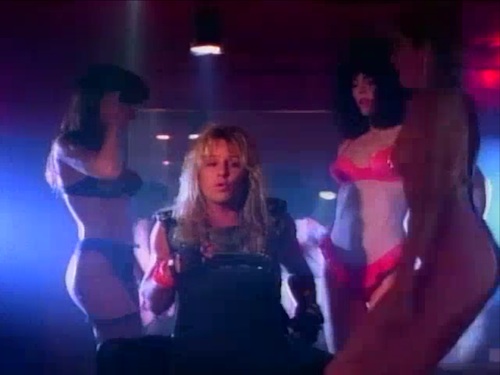
Alt-weeklies are always willing to run a strip club feature, using this reliably entertaining subject matter as clickbait. They’ll do stories about labor issues, the food they serve, current legal challenges, and the music they play (yes, that’s me). This year, a couple of alt-weekly strip club stories stuck with me for covering a phenomenon I haven’t personally encountered: Strip clubs serving as live music venues in Miami and Los Angeles.
In the days of Gypsy Rose Lee, striptease was backed by a live band because it was a theatrical performance. Burlesque houses had a house band, not a DJ, to supply the music. As burlesque turned to stripping and theaters to clubs, DJs and jukeboxes became the soundtrack of striptease. It’s a simpler, cheaper way to supply music for a constant parade of dancers on multiple stages.
When I think about what it would be like to dance backed by a live band, it’s hard to envision how it would go in my current work environment. All of the images in my head involve performing on a proscenium stage, doing an elaborate, one-song routine, not pole tricks and floorwork, and certainly not lapdances. You couldn’t get a band to cut every song at three and a half minutes. No, it simply wouldn’t work in a strip club today. Burlesque performers or go-go dancers can easily perform with live bands, but not strippers. The first two are performers (and therefore in the same business as the band), while modern strippers are less performers than combination salespeople/sex workers. Dancers can coordinate performing alongside musicians, but not selling. While music can benefit sales or sex work as a mood and tempo-setter, recorded music will do the job more efficiently than a live band.
Efficiency be damned: There’s something delightful about the attempts of clubs to bring live music back into the bars. In Miami, an instrumental jazz-funk band called Seizurely booked themselves a gig at Bare Necessity (Seizurely, by the way, is a great name for either a funk cover band or a stripper). Liz Tracy filed a trip report in the Miami New Times, a paper that covers strip clubs as frequently as Tits and Sass does. It’s too bad their female member refused to play the club, because it sounded like it went over pretty well.
Los Angeles has a thriving bands-playing-strip-clubs scene, as should be expected from the city that created the stripper-rocker hybrid that was hair metal. Both Crazy Girls and the Cheetah regularly feature live music, and the former featured Portland/L.A. stripper-of-note Malice as its MC (she’s now at the Cheetah). But the idea of indie bands playing strip clubs was confusing for LA Weekly reporter Ben Westhoff. “You can lead a Pavement fan to strippers, it turns out, but you can’t make him watch,” Westhoff wrote of the scene at Cheetah’s.
Westhoff seems a bit sheltered. “The bands and their fans tend to come from liberal, middle class backgrounds where paying money to see someone naked is quite gauche.” Hm. “But one would think the weepy, often a-rhythmic strains of indie rock would be hard to dance to, no?” I do not think we are familiar with either the same kinds of liberal, middle class people or the same kinds of indie rock, as the latter has actually included danceable beats for some time, and the former like to look at naked people just like the rest of America. But he has a point: indie bands probably can’t soundtrack strippers as well as bands of other genres. I’d definitely find it easier to dance to a Seizurely performance than one by anyone on Mexican Summer.
Is this going to be a trend in clubs? It depends on a couple of things: the “fuck it” quotient of club management and bands and the ability of the crowds to run up solid bar tabs and pay cover charges. The whole point of messing with your format is to bring in a new crowd because the old one has stopped coming in. Business has been declining for a lot of strip clubs, so some of them are bound to try a gimmick or two to bring people in the door. The club’s interest is mainly in cover charges and drink sales unless it’s the kind of strip club that doesn’t serve alcohol and makes a lot of its money by keeping a big percentage of dance sales, so it’s not really a concern to them if the crowd spends money on strippers and lapdances.
I can’t see how bringing in a live band crowd is going to be wildly lucrative for the strippers. It might benefit the more stage-focused dancers if clubs revert to the burlesque model where dancers were paid performers, like the strippers hired to make out in a pool while Salem played at Art Basel. But in the current model, where we are lapdance saleswomen, it’s more of a curiosity than a boon to business. Much like trend pieces on alt-weekly sites, come to think of it! Traffic doesn’t automatically covert to money.
I suppose it is an interesting idea, but there was never a truer strip club statement; “Traffic doesn’t automatically covert to money.”
Some owners/booking managers don’t seem to understand this.
They think that the busier the bar, the better the tips for everyone.
Yeah right. I’d schedule half my weeks on the slower nights, because that’s when it seemed I was likely to hook the fishes with the more generous wallets. The party crowd be damned.